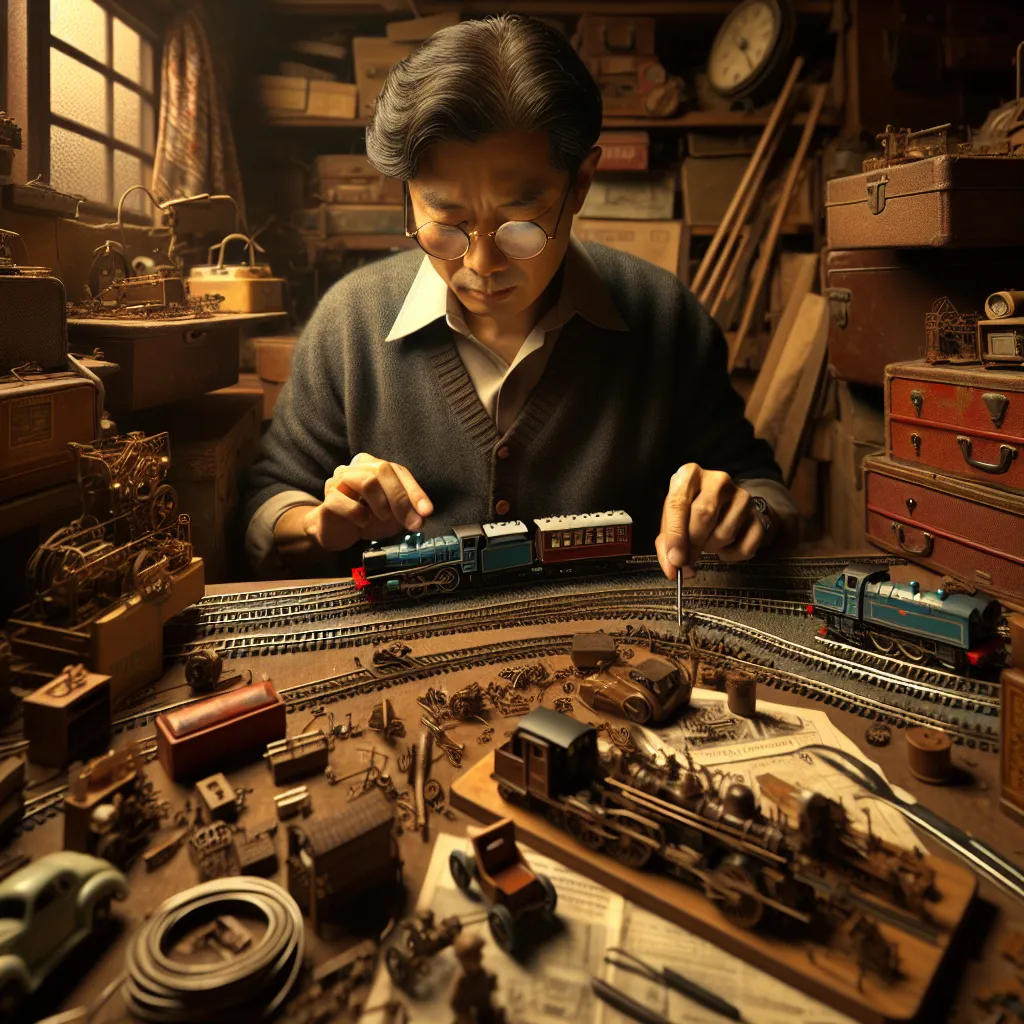I’m James May, and if you remember my show “The Reassembler,” you know I enjoy reassembling everyday objects. Today, I had the nostalgic pleasure of putting together a 1971 Triang Hornby Flying Scotsman train set. This isn’t just a task but an expedition back to familiar wonders of the past, where lovely and iconic objects are spread out in countless bits, gradually pieced together. Only by doing so can we appreciate their intricate workings.
As I meticulously rearranged the Flying Scotsman’s 138 parts, I couldn’t help but marvel at the electric motor, a hallmark of 1970s technology—a genius piece of miniature engineering known as the XO series. Interestingly, my old train set is a fragment of my childhood spanning over 40 years. Powered by the miracle of electricity (as it was called in the ’70s), rebuilding it felt deeply satisfying—both painstaking and gratifyingly therapeutic.
It was a sepia-toned journey back to simpler times when such train sets were a source of joy for many, including myself. Though modern standards deem it crude, I marvel at its elegance—particularly as a lot of these trains lie forgotten in lofts, awaiting resurrection. Many dads, met with the apathetic glances of their children glued to Pokémon Go, find joy in these remnants of their own youth but struggle with decades-old oils and broken connections. Restoring these has become a sort of hobby for me, despite often having no proper friends to share it with.
My encounter with magnetism and the magnet recharging device brought a smile. Magnetism—the invisible force with ancient roots, misunderstood yet pivotal—was at play, as I revitalized the tiny motor, ensuring it would spin anew, reliably driving the cherished locomotive across the track.
The engineering of the Flying Scotsman offers a narrative of ingenuity—offset cranks preventing the locomotive from halting in unwieldy positions, ensuring smooth restarts. This echoed the real steam engines’ brilliance, paralleled in the meticulous quartering of the model’s wheels—a crucial job for a flawless run.
Assembling the coaches, with their charmingly simple construction, underscored my rekindled love for this hobby. They represent a time when train sets were more than toys; they were miniature marvels of craftsmanship, affordable and brilliantly made, symbolizing a cherished past.
It felt philosophical, a sort of meditation as parts fell into place, evoking memories and the bygone excitement of childhood Christmas mornings, unwrapping magical gifts. Despite the rapid advance of technology—from household video games to modern iPads—I remain an ardent lover of tangible, mechanical wonders like the train set.
The final moments of the build, including the realistic chuffing sound feature, encapsulated the charm of a past era, re-assembling not just toy parts but stitching together fragments of history and memory, making them come alive once again.
Putting together the Flying Scotsman—and seeing it run, eventually—offered bittersweet joy. For hours, this intricate puzzle of nostalgia became whole, functioning under its mythic steam, correct and wonderfully real in its miniature expanse. It’s not just about old toys. It’s about reviving and preserving pieces of our history, breathing life into mechanical art from simpler times, and the profound satisfaction that accompanies seeing it all work again.






